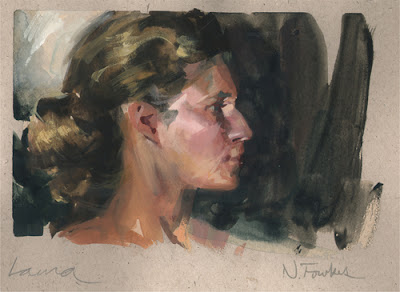ONE LOVELY DRAWING, part nine
There is obviously no such thing as the single greatest drawing in the history of the world. It would be foolish to think about rating art that way. However, if there was such a drawing... ...it would probably be this one by Michelangelo. It is a preparatory drawing for Michelangelo's illustrations of the Bible for the Sistine Chapel. I can't think of any object with more grace or beauty with which to end 2006. This drawing is of the Libyan Sibyl who foretold "the coming of the day when that which is hidden shall be revealed." She had the power of prophecy because she was by birth half mortal and half divine: "An immortal nymph was my mother, my father an eater of corn." I am just a lowly corn eater myself but I have enjoyed sharing these lovely images with you in 2006 and I wish all of you the happiest of new years.

